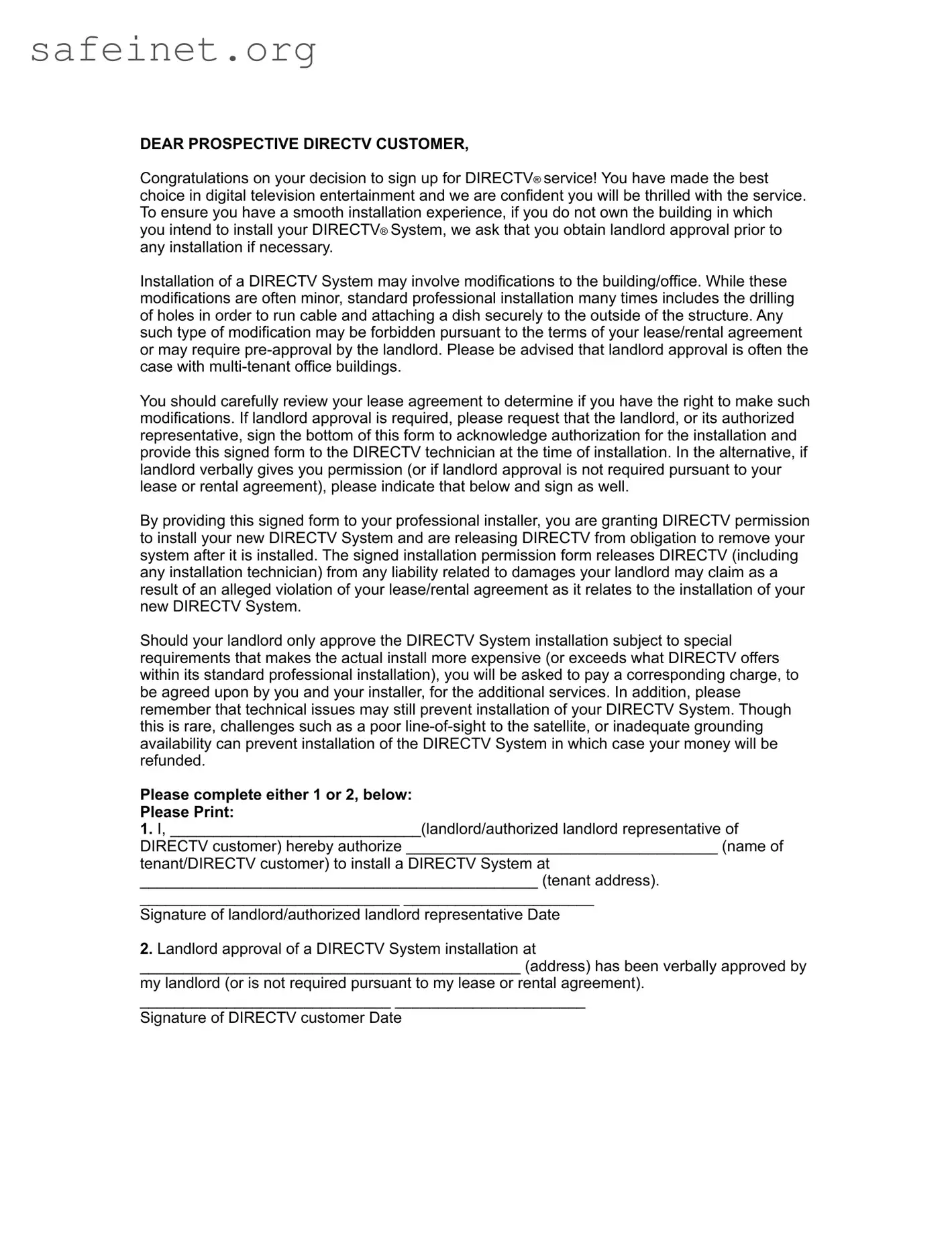DEAR PROSPECTIVE DIRECTV CUSTOMER,
Congratulations on your decision to sign up for DIRECTV® service! You have made the best choice in digital television entertainment and we are confident you will be thrilled with the service. To ensure you have a smooth installation experience, if you do not own the building in which you intend to install your DIRECTV® System, we ask that you obtain landlord approval prior to any installation if necessary.
Installation of a DIRECTV System may involve modifications to the building/office. While these modifications are often minor, standard professional installation many times includes the drilling of holes in order to run cable and attaching a dish securely to the outside of the structure. Any such type of modification may be forbidden pursuant to the terms of your lease/rental agreement or may require pre-approval by the landlord. Please be advised that landlord approval is often the case with multi-tenant office buildings.
You should carefully review your lease agreement to determine if you have the right to make such modifications. If landlord approval is required, please request that the landlord, or its authorized representative, sign the bottom of this form to acknowledge authorization for the installation and provide this signed form to the DIRECTV technician at the time of installation. In the alternative, if landlord verbally gives you permission (or if landlord approval is not required pursuant to your lease or rental agreement), please indicate that below and sign as well.
By providing this signed form to your professional installer, you are granting DIRECTV permission to install your new DIRECTV System and are releasing DIRECTV from obligation to remove your system after it is installed. The signed installation permission form releases DIRECTV (including any installation technician) from any liability related to damages your landlord may claim as a result of an alleged violation of your lease/rental agreement as it relates to the installation of your new DIRECTV System.
Should your landlord only approve the DIRECTV System installation subject to special requirements that makes the actual install more expensive (or exceeds what DIRECTV offers within its standard professional installation), you will be asked to pay a corresponding charge, to be agreed upon by you and your installer, for the additional services. In addition, please remember that technical issues may still prevent installation of your DIRECTV System. Though this is rare, challenges such as a poor line-of-sight to the satellite, or inadequate grounding availability can prevent installation of the DIRECTV System in which case your money will be refunded.
Please complete either 1 or 2, below:
Please Print:
1.I, _____________________________(landlord/authorized landlord representative of DIRECTV customer) hereby authorize ____________________________________ (name of tenant/DIRECTV customer) to install a DIRECTV System at
______________________________________________ (tenant address).
______________________________ ______________________
Signature of landlord/authorized landlord representative Date
2.Landlord approval of a DIRECTV System installation at
____________________________________________ (address) has been verbally approved by my landlord (or is not required pursuant to my lease or rental agreement).
_____________________________ ______________________
Signature of DIRECTV customer Date
